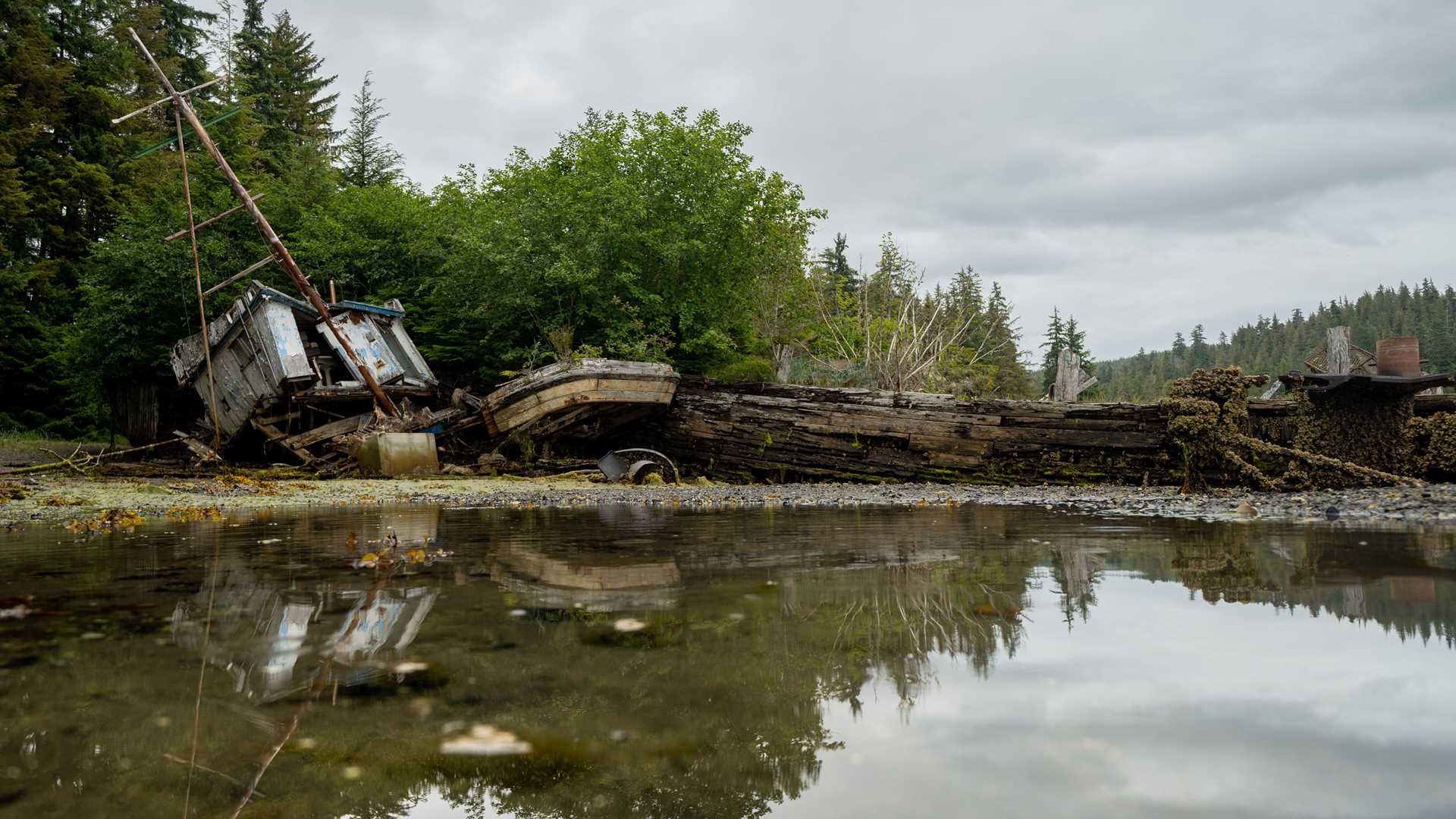At first glance, the landscape of Southeast Alaska can seem unforgiving and inhospitable. With some of the islands we’ve been visiting receiving over 200 inches of rain per year, it’s nearly impossible to stay dry. At 58º N, the winter nights are long, dark, and cold. These conditions, common along the panhandle of Alaska, beg the question: how have people and cultures survived and thrived here? In spite of the wet, cold, and dark, people have called this land home for thousands of years. Not only that, culture has flourished.
Today, we landed at Security Bay, a protected inlet on the northwest corner of Kuiu Island along Chatham Strait. Our time ashore there allowed us to explore the answer to this question. Walking along the intertidal flats, bushwhacking through the rainforest underbrush, Zodiac-touring around the edges of the bay, and diving below the waves revealed a natural abundance that is key to the culture of Southeast Alaska.
Onshore, guests discovered the diversity of the intertidal zone as the tide quickly receded, revealing a colorful array of invertebrates and algae, like clams and rockweed that the native Tlingit relied upon for both subsistence and medicine. Similarly, in the forest, hikers found the plants commonly harvested late in the summer: blueberries, salmonberries, and even the medicinal devil’s club. Other discoveries showcased the more recent ways of living off the land. On the beach, we explored the dilapidated remains of an old cannery. The washed up boats, fish pens, and crab traps highlighted the ways in which modern Alaskan fishermen have taken advantage of the region’s highly productive waters to make their living. Salmon and crab fishing have been, and continue to be, a mainstay of the Alaskan livelihood. Meanwhile, our undersea team of divers, Shaylyn and Gail, descended below the waves to capture footage of the marine abundance in action and share with us some of the aquatic life that these fishermen rely on.
And amazingly, the culture isn’t limited to humans in Southeast
Alaska. The animals even have their own. Our afternoon was spent watching
dozens of humpback whales in the glassy waters of Chatham Strait in incredible
displays of feeding. These whales have made their way from Mexico and Hawaii to
take advantage of the same marine abundance the Tlingit and the modern day
fishermen rely upon. We welcomed Martin van Abssan of the Alaska Whale
Foundation onboard to tell us more about the whales and his research on these
feeding behaviors. According to van Asbaan, it turns out that they learn unique
feeding tactics from one another, across generational lines and between
unrelated individuals. In other words, the whales exhibit culture. All good
questions lead to yet another question. We began the day wondering how culture
thrives here and ended the day questioning what exactly we mean by “culture.”







